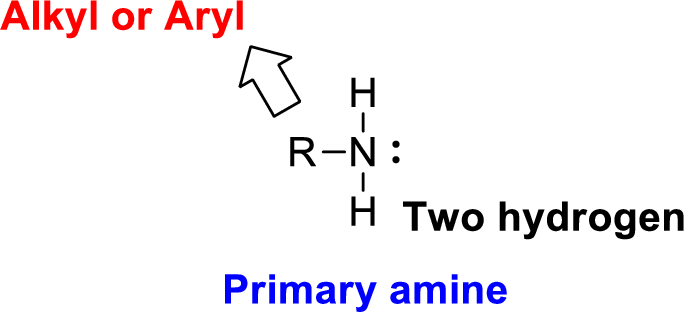
Interpretation:
The structural formulas for three secondary
Concept introduction:
Isomer: A molecule having same molecular formula with different chemical formula is called isomer.
Amine:
The compound contains amine
Example is given below

Classification of amines:
Amines can be classified in to three types, Primary, Secondary, Tertiary
Primary amine:
Nitrogen atom (

Secondary amine:
Nitrogen atom (

Tertiary amine:
Nitrogen atom (

Trending nowThis is a popular solution!
Learn your wayIncludes step-by-step video

Chapter 1 Solutions
Organic Chemistry
- Draw the structures for the four amines of molecular formula C 3H 9N. Give the systematic name for each amine.arrow_forwardDraw structural formulas for all the amines having the formula C3H9N. Classify each as either a primary amine, a secondary amine, or a tertiary amine.arrow_forwardBriefly explain primary, secondary, tertiary, and quarternary amine structures.arrow_forward
- Write the structural formula for a primary amine with the molecular formula C3H₂N. Draw Your Solutionarrow_forwardDraw structural formulas for Q.) The four primary (1°) amines with the molecular formula C4H11N.arrow_forwardThree amide isomers, N,N-dimethylformamide, N-methylacetamide, and propanamide, have respective boiling points of 153 °C (426 K), 202 °C (475 K), and 213 °C (486 K). Explain these boiling points in light of their structural formulas.arrow_forward
- Describe the water solubility of amines in relation to theircarbon chain length.arrow_forwardDraw all the possible amide isomers with C3H,NO molecular formula.arrow_forwardTRUE OR FALSE (a) There are three amines with the molecular formula C3H9N. (b) Aldehydes, ketones, carboxylic acids, and esters all contain a carbonyl group. (c) A compound with the molecular formula of C3H6O may be either an aldehyde, a ketone, or a carboxylic acid. (d) Bond angles about the carbonyl carbon of an aldehyde, a ketone, a carboxylic acid, and an ester are all approximately 109.5°. (e) The molecular formula of the smallest aldehyde is C3H6O, and that of the smallest ketone is also C3H6O. (f) The molecular formula of the smallest carboxylic acid is C2H4O2.arrow_forward
- Explain aryl and alkyl amines and their reactions by giving two examples of each.arrow_forwardN-Methylpyrrolidine has a boiling point of 81 °C, and piperidine has a boiling point of 106 °C. Tetrahydropyran has a boiling point of 88 °C, and cyclopentanone has a boiling point of 141 °C. These two isomershave a boiling point difference of 53 °C. Explain why the two oxygen-containing isomers have a much larger boilingpoint difference than the two amine isomersarrow_forwardGive the following amine an IUPAC name: NH₂arrow_forward
 Chemistry for Today: General, Organic, and Bioche...ChemistryISBN:9781305960060Author:Spencer L. Seager, Michael R. Slabaugh, Maren S. HansenPublisher:Cengage Learning
Chemistry for Today: General, Organic, and Bioche...ChemistryISBN:9781305960060Author:Spencer L. Seager, Michael R. Slabaugh, Maren S. HansenPublisher:Cengage Learning
